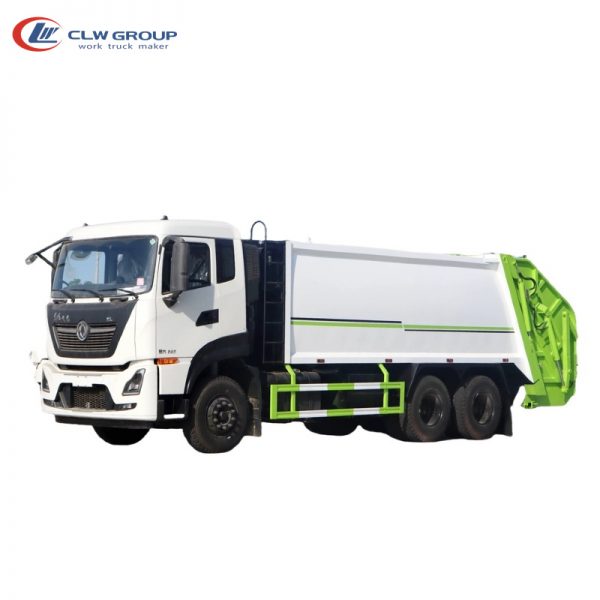Introduction
Truck-mounted cranes play a crucial role in various industries such as construction, transportation, and logistics. These versatile machines are equipped with hydraulic systems that are responsible for powering the crane's lifting and moving capabilities. In this comprehensive guide, we will delve deep into the intricacies of truck-mounted crane hydraulic systems, exploring how they work, their components, maintenance requirements, and best practices for ensuring optimal performance and safety.
Understanding Hydraulic Systems
Hydraulic systems are widely used in truck-mounted cranes due to their ability to generate immense power efficiently. These systems operate based on Pascal's Law, which states that pressure exerted at any point in a confined fluid is transmitted undiminished in all directions throughout the fluid. In the context of a truck-mounted crane, hydraulic systems use this principle to convert the mechanical energy generated by the engine into hydraulic pressure, which in turn drives the crane's movements.
Components of a Hydraulic System
A typical truck-mounted crane hydraulic system consists of several key components that work together to facilitate the crane's operations:
1. Hydraulic Pump: The hydraulic pump is the heart of the system, responsible for converting mechanical energy into hydraulic energy. It draws hydraulic fluid from the reservoir and pressurizes it before sending it to the hydraulic cylinders.
2. Hydraulic Cylinders: Hydraulic cylinders are devices that use the pressurized hydraulic fluid to create linear motion. In a truck-mounted crane, hydraulic cylinders are used to lift and lower the boom, rotate the crane, and extend/retract the outriggers.
3. Control Valves: Control valves regulate the flow and direction of hydraulic fluid within the system. By manipulating these valves, operators can control the speed and direction of the crane's movements.
4. Hydraulic Fluid: Hydraulic fluid serves as the medium through which energy is transmitted within the system. It must possess the right viscosity, lubricating properties, and temperature stability to ensure smooth and efficient operation.
5. Hybrid work trucks for fuel savings : The reservoir stores hydraulic fluid and helps dissipate heat generated during operation. It also allows air bubbles to rise to the surface, preventing cavitation and ensuring system efficiency.
How Truck-Mounted Crane Hydraulic Systems Work
The operation of a truck-mounted crane hydraulic system can be broken down into several key steps:
1. Power Generation: The hydraulic system is powered by the truck's engine, which drives the hydraulic pump.
2. Hydraulic Pump Operation: The hydraulic pump draws hydraulic fluid from the reservoir and pressurizes it to the required level.

3. Fluid Distribution: The pressurized hydraulic fluid is distributed to the various hydraulic cylinders and control valves within the system.
4. Cylinder Actuation: When the operator activates the crane's controls, the control valves direct the pressurized fluid to the hydraulic cylinders, causing them to extend or retract.
5. Crane Movement: As the cylinders extend or retract, they generate the necessary force to lift or lower the crane's boom, rotate the crane, or extend/retract the outriggers.
6. Fluid Return: After performing the desired movement, the hydraulic fluid returns to the reservoir to complete the cycle.
Maintenance Requirements
Proper maintenance is essential to ensure the longevity and performance of a truck-mounted crane hydraulic system. Here are some key maintenance practices to follow:
1. Regular Inspections: Perform routine inspections of the hydraulic system, checking for leaks, damaged hoses, and worn components.
2. Fluid Checks: Monitor the hydraulic fluid level and quality regularly. Ensure that the fluid is clean, at the correct viscosity, and free of contaminants.
3. Filter Replacement: Regularly replace the hydraulic filters to prevent dirt and debris from entering the system and causing damage.
4. Component Lubrication: Lubricate moving parts such as hydraulic cylinders and valves to reduce friction and wear.
5. Temperature Monitoring: Keep an eye on the operating temperature of the hydraulic system to prevent overheating, which can degrade the fluid and damage components.
Best Practices for Optimal Performance
To maximize the performance and safety of a truck-mounted crane hydraulic system, consider the following best practices:
1. Operator Training: Ensure that operators are trained in the proper operation of the crane and familiar with the hydraulic system's controls.
2. Load Limits: Adhere to the crane's load capacity limits to prevent overloading, which can strain the hydraulic system and compromise safety.
3. Smooth Operation: Encourage operators to make smooth, controlled movements with the crane to reduce stress on the hydraulic components.
4. Emergency Procedures: Train operators on emergency procedures in case of hydraulic system failure, such as how to safely lower a load in the event of a malfunction.
5. Regular Maintenance Schedule: Establish a regular maintenance schedule for the hydraulic system, including fluid changes, filter replacements, and component inspections.
Conclusion
Truck-mounted crane hydraulic systems are vital components that enable these powerful machines to perform a wide range of lifting and moving tasks. By understanding how these systems work, their key components, maintenance requirements, and best practices for optimal performance, operators can ensure the safe and efficient operation of truck-mounted cranes in various industries. By following proper maintenance procedures and safety protocols, truck-mounted crane hydraulic systems can continue to deliver reliable performance and contribute to increased productivity on job sites.
